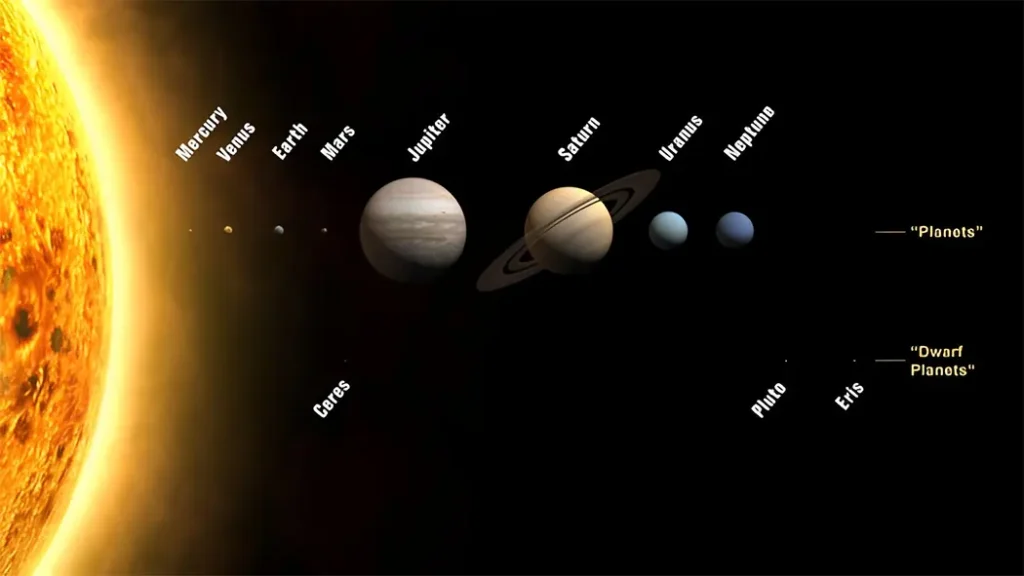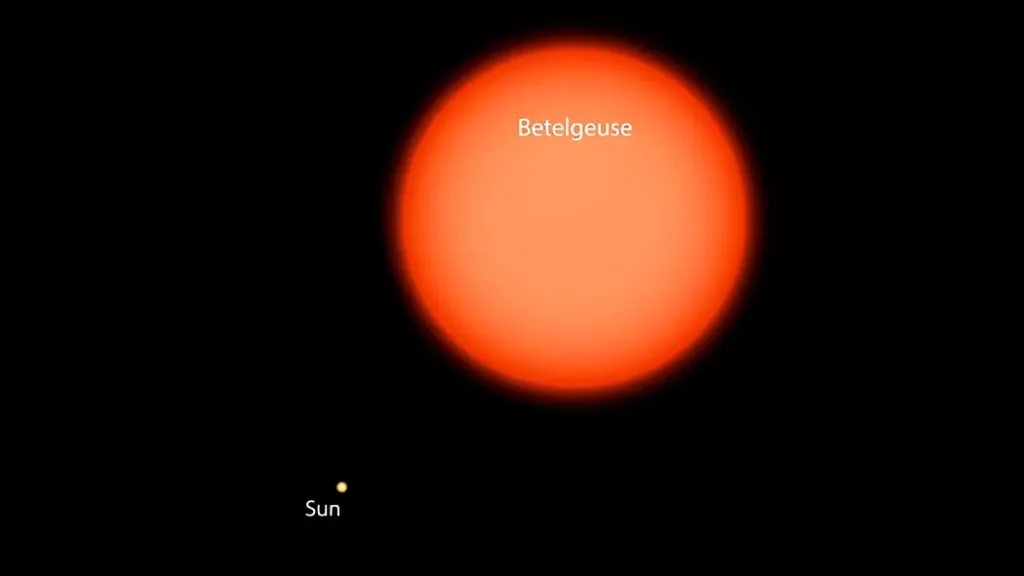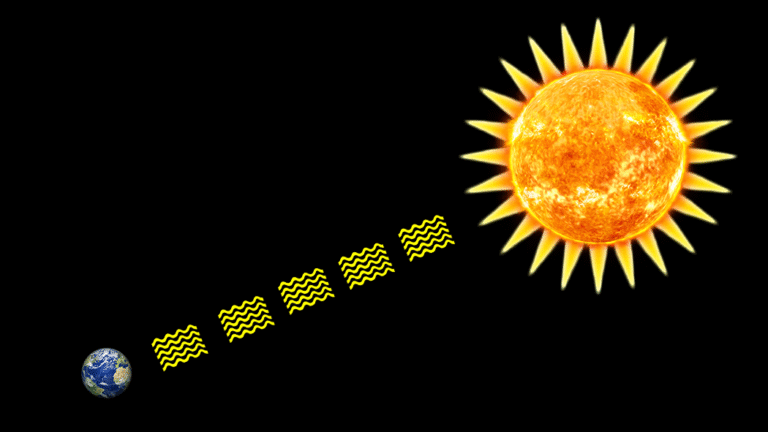The Sun is the biggest object in our solar system. Its size is hard to imagine without a comparison. When we look at the Sun next to planets like Earth or even Jupiter, we start to understand how massive it really is.
To help us understand its size, let’s begin with a simple question: how many Earths can fit in the Sun?
How Big is the Sun Compared to the Earth
Two-Dimensional View
When we look at the Sun from Earth, it appears as a flat, glowing disk in the sky. But in reality, the Sun is a giant ball of hot gas. Its diameter is about 1.4 million kilometers (or 865,000 miles). In comparison, Earth’s diameter is about 12,756 kilometers (or 7,926 miles).
If we placed Earths in a straight line across the Sun, we could fit about 109 Earths side by side.
Three-Dimensional View
For a better idea of the Sun’s size, we must compare volumes, not just diameters. The Sun is a sphere, and so is Earth.
- Volume of the Sun: 1.41 × 1018 cubic kilometers (3.38 x 1015 cubic miles)
- Volume of Earth: 1.083 × 1012 cubic kilometers (2.6 x 1011cubic miles)
By dividing the Sun’s volume by Earth’s, we find that the Sun is about 1.3 million times larger than Earth. This is how many Earths can fit in the Sun when considering its three-dimensional size.

How Big Is the Sun Compared to the Moon?
The Moon is Earth’s natural satellite and is easy to see in the night sky. Even though it looks about the same size as the Sun from Earth, the truth is very different.
- The Sun is about 400 times larger in diameter than the Moon.
- In volume, the Sun is about 64 million times larger than the Moon.
We see them as the same size because the Sun is also about 400 times farther away than the Moon. This perfect ratio is why we can experience solar eclipses.
How Big Is the Sun from Mercury?
Mercury is the closest planet to the Sun. It is also the smallest.
- The Sun’s diameter is 277 times larger than Mercury’s.
- In volume, the Sun can hold about 21 million Mercurys.
Because Mercury is much closer to the Sun than Earth, the Sun looks much larger from there. In fact, it appears three times bigger in Mercury’s sky than it does from Earth. Also, sunlight on Mercury is seven times brighter than on Earth.
How Big Is the Sun Compared to Jupiter?
Jupiter is the largest planet in our solar system, but even it looks small next to the Sun.
- The Sun’s diameter is 10 times larger than Jupiter’s.
- In volume, the Sun can fit about 1,000 Jupiters inside it.
This shows how huge the Sun is, even compared to the biggest planet we have.

How Big Is the Sun Compared to a Human?
Now, let’s put the size of the Sun into perspective compared to something more familiar—human size.
The Sun makes up 99.8% of the total mass of the entire solar system. Everything else—planets, moons, comets, and asteroids—makes up only 0.2%.
To visualize the size of the Sun in comparison to human size, consider this:
- If 782 million people, each of average height, stood on top of each other, the tower of humans would be the same height as the Sun.
- Earth is about 1.37 x 1022 times larger than a human in volume.
- The Sun is 1.3 million times larger than Earth. So, roughly 1.78 x 1028 people can fit inside the Sun by volume.
How Big Is the Sun Compared to Other Stars?
Even though the Sun is huge, it’s actually a medium-sized star. Some stars are much smaller, and others are far bigger.
- Red dwarfs are the smallest stars. They are much smaller than the Sun.
- Betelgeuse, a red giant star, is about 700 times wider than the Sun. It is roughly 700 million times larger in volume, and 14,000 times brighter.
- UY Scuti, a red hypergiant star, is one of the largest known. Its diameter is about 3,400 times that of the Sun. In volume, you could fit 5 billion Suns inside it. It is also 100,000 times brighter than our Sun.


Quick Summary: How Big is the Sun Compared to Other Celestial Objects?
| Object | Sun’s Diameter Compared to Object | Sun’s Volume Compared to Object | Notable Facts |
| Earth | ~109 times larger | ~1.3 million times larger | About 1.3 million Earths can fit in the Sun |
| Moon | ~400 times larger | ~64 million times larger | Appears same size from Earth due to distance ratio |
| Mercury | ~277 times larger | ~21 million times larger | Sun appears 3× larger and 7× brighter from Mercury |
| Jupiter | ~10 times larger | ~1,000 times larger | Largest planet, but still much smaller than the Sun |
| Human | ~782 million times larger | ~1.78 x 1028 times larger | The sun is unbelievably large compared to a human. |
| Red Dwarf Stars | significantly Larger | significantly larger | Red dwarfs are one of the smallest types of stars |
| Betelgeuse | ~700 times smaller | ~700 million times smaller | ~14,000× brighter than the Sun |
| UY Scuti | ~3,400 times smaller | ~5 billion times smaller | ~100,000× brighter than the Sun |
So, how many Earths can fit in the Sun? About 1.3 million.
By comparing the Sun to Earth, the Moon, Mercury, Jupiter, and other stars, we begin to understand how big the Sun really is. It makes us appreciate not only the size of the Sun but also the vastness of the universe.
Even though we are tiny in size, we have minds capable of exploring these great cosmic truths. And that, in itself, is something truly amazing.




